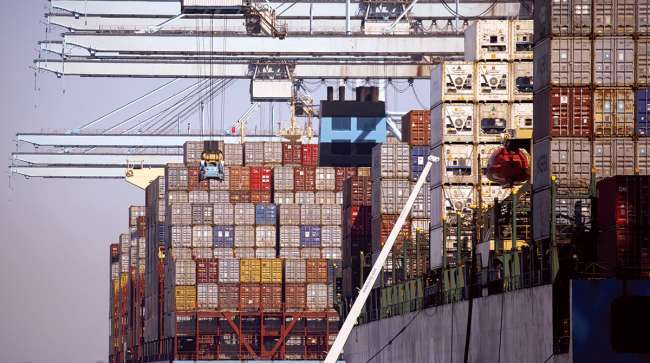Trump Approves U.S.-China Trade Deal to Halt Dec. 15 Tariffs

[Stay on top of transportation news: Get TTNews in your inbox.]
President Donald Trump signed off on a phase-one trade deal with China, averting the Dec. 15 introduction of a new wave of U.S. tariffs on about $160 billion of consumer goods from the Asian nation, according to people familiar with the matter.
The deal presented to Trump includes a delay in the Dec. 15 new round of tariffs, a schedule for a rollback of some of the existing ones and a promise by the Chinese to buy more U.S. agricultural goods, according to the people. The terms have been agreed upon but the legal text has not yet been finalized, people said.
Trade advisers met with the president Dec. 12 to discuss the pact. A White House spokesperson declined to comment.
U.S. stocks rose and Treasury yields spiked on the news. Earlier Dec. 12, Trump tweeted that the U.S. and China are “VERY close” to signing a “BIG” trade deal, also sending equities higher.
“They want it, and so do we!” he tweeted five minutes after equity markets opened in New York, sending stocks to new records.
Getting VERY close to a BIG DEAL with China. They want it, and so do we! — Donald J. Trump (@realDonaldTrump) December 12, 2019
The phase-one pact has been expected to reduce existing tariffs and delay ones due to take effect Dec. 15.
Trump has rejected deals with China before. Negotiators have been working on the terms of the phase-one deal for months after the president announced in October that the two nations had reached an agreement that could be put on paper within weeks.
The U.S. has added a 25% duty on about $250 billion of Chinese products and a 15% levy on another $110 billion of its imports over the course of a roughly 20-month trade war. Discussions now are focused on reducing those rates by as much as half, as part of the interim agreement Trump announced almost nine weeks ago.
In addition to a significant increase in Chinese agricultural purchases in exchange for tariff relief, officials have also said a phase-one pact would include Chinese commitments to do more to stop intellectual-property theft and an agreement by both sides not to manipulate their currencies.
Put off for later discussions are knotty issues such as longstanding U.S. complaints over the vast web of subsidies ranging from cheap electricity to low-cost loans that China has used to build its industrial might.
Reason to Delay
Officials from the world’s two biggest economies have been locked in negotiations on the phase-one deal since Trump announced it.
The new duties, which had been due to go ahead at 12:01 a.m. Washington time Dec. 15 unless the administration said otherwise, would hit some $160 billion in consumer goods from China including smartphones and toys.
Before Dec. 12, Trump’s advisers had sent conflicting signals and stressed that he hadn’t made up his mind on the next steps. Advocates of delaying the tariff increase have argued that continued negotiations with Beijing will enable him to maintain a tough line with China without inflicting the economic damage that more import taxes might bring.
The decision that was facing Trump highlights one dilemma he confronts going into the 2020 election: whether to bet on an escalation of hostilities with China and the tariffs he is so fond of or to follow the advice of more market-oriented advisers and business leaders who argue a pause in the escalation would help a slowing U.S. economy bounce back in an election year.
Robert Lighthizer, the U.S. trade representative leading the negotiations with China, is in a camp that sees progress in talks and wants them to continue without further escalation, according to people familiar with the discussions. That would set up a push to conclude the talks in January, possibly before a State of the Union address to Congress by Trump.
Want more news? Listen to today's daily briefing:


